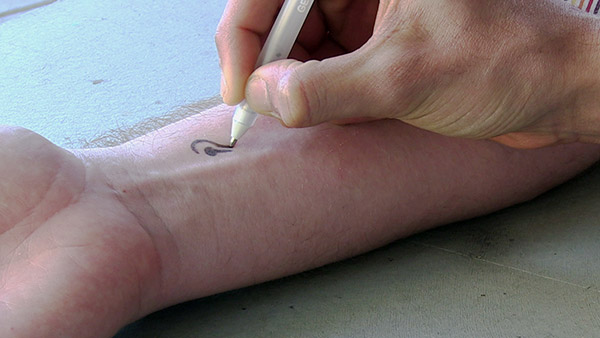Researchers from the Department of NanoEngineering at the University of California, San Diego have developed a series of enzyme-based inks which can be used to create a variety of low-cost, wearable, sensors for medical and environmental applications. The inks can be easily applied using a simple ball point pen.
The researchers sought to create a sensor that could be safe, reproducible, easy to apply and accurate in a variety of settings. To do so they used a mixture of the biocompatible binder polyethylene glycol, conductive graphite powder, chitosan to enhance surface adhesion and the sugar substitute xylitol as a stabilising agent. The resulting enzymatic ink has thus been optimized for ensuring good biocatalytic activity, electrical conductivity, biocompatibility, reproducible writing and surface adherence. The inks offer rapid fabrication of high-quality, flexible & inexpensive bio-sensors which can be easily applied to a wide variety of surfaces & textures with minimal user training.
The team, led by Prof. Joseph Wang, have been working on enzyme-based sensors for lactate and glucose sensing for several years, and their current delivery system seems to be an evolution of the non-invasive wearable tattoo glucose sensor we covered early last year. The researchers have showcased two applications of their enzymatic ink-based roller pens in the latest issue of the journal Advanced Healthcare Materials: epidermal blood–glucose sensing and detection of carbolic acid on a leaf as shown in the video.
The team estimates that a single pen of ink can be used to draw the equivalent of 500 glucometer test strips. With the proliferation of wearable technologies, solutions like this which can produce, conformable, low cost, robust sensors for on-skin monitoring may have huge implications for how diseases are monitored and managed in the future.
Advanced Healthcare Materials Article
The post Draw-On Wearable Sensors Enabled by Enzymatic Inks appeared first on Medgadget.
